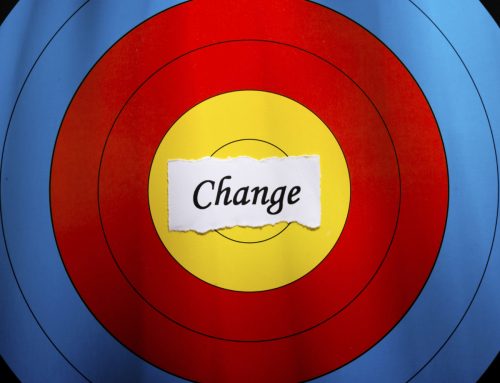Taxi companies could have created a ride scheduling and payment app. They didn’t.
There are a number of reasons why it didn’t happen, but the biggest reason was reluctance to challenge the status quo.
The same goes for a host of other companies. Blockbuster’s failure to proactively innovate—or even take the opportunity to purchase Netflix—is one of the most notable. We can’t forget, however, Nokia, IBM, Kodak, BlackBerry, MySpace, and RadioShack.
We don’t know the exact conversations about change in any of these companies, but it is a very safe bet to assume that no one stood up and said, “Let’s do nothing because we want the company to fail.”
We all want our organizations to continually be better. If they are going to be better, we must do at least some things different. If things are going to be different, they have to change.
That makes all leadership, especially in today’s world, change leadership.
Change Leadership not Change Management
Rear Admiral Grace Murray Hopper famously said: “You manage things. You lead people.”
Unfortunately, the remainder of her statement is often omitted: “We went overboard on management and forgot about leadership.”
That happened with our approach to change, too.
We have gone overboard managing the immense amount of data, projects, and things to be coordinated and corralled in our attempts to “manage” change. It stems from our desire to remove the messiness and bring order to the process of change.
It is a worthwhile objective, but as historian Henry Adams reminded us, “Chaos was the law of nature. Order was the dream of man.”
Change—especially the transformational growth we need today—is always messy. Most important, it is more likely to fail because of faulty leadership rather than faulty management.
Leadership is about influence. Nothing more and nothing less. For our organizations and institutions to flourish in the future, we need more leaders who can influence others to disrupt the status quo.
Disrupting the Status Quo
We come by our desire for order honestly. The human brain appears is hard-wired to value certainty and view uncertainty as a potential threat.
The human application of Newton’s First Law also has an impact.
We learned in high school physics that objects at rest tend to stay at rest, and objects in motion tend to remain in motion until they are acted upon by a greater force in the opposing direction.
That explains the why inertia of the status quo exists. It doesn’t actually help you overcome it. Here are four actions you can take right now.
- Create emotional readiness to counteract fear. People, organizations, and industries change for one of two basic reasons: crisis pushes them to change, or opportunity pulls them to do so. You occasionally see a combination of both, but there is usually one primary diver.Most of us wait on crisis. If you find yourself there, don’t sugar coat or waste it. Just realize that you are likely to be playing from behind in the marketplace. It’s not that all of those failed and disrupted companies didn’t try anything. It is that they waited for crisis to generate emotional readiness.
The best organizations seize opportunities. Netflix jumped from distributing DVDs to delivering its services through a streaming platform even though the company was not in crisis. It wasn’t an easy change, but Reed Hastings created a compelling vision of the future that focused on proactively creating value for the customer rather than playing catch up to survive.
While many people are hesitant to change, everyone wants to get better. The only way to maintain momentum and ensure long-term success in today’s marketplace is a relentless focus on making yourself indispensable to your customers.
- Provide involvement and support. Sending a positive message about seizing the future does not ensure that people will embrace or pursue it. You cannot rely solely on a change communication plan if the goal is to inspire people to take new action.Get everyone involved early and often. People support what they help create, and no one ever argues with their own ideas.
Likewise, your team will need training and support. Becoming proficient and comfortable with new ways of thinking and working take time even when there is complete support. Knowing that coaching, training, and support are available helps overcome the fear of incompetence.
- Tell positive stories early and often. Facts impart knowledge. Stories create connections and feeling, and feelings inspire people to stick with a change even when doing so is uncomfortable.The elements of a great story are the same if you are making a successful movie or leading organizational transformation. You need a character with which everyone can identify, a believable plot with a conflict to overcome, struggle, and resolution.
Sharing positive stories about real people achieving results helps overcome resistance. More important, it provides a respected counterbalance to naysayers that might try to sabotage your change efforts.
- Go first. Ross Perot, founder of EDS and Perot Systems, once told me that Leaders eat last, but they go first.His meaning was more than a pithy play on words. Your team is watching. It is more difficult for them to get excited about where the organization is going if they sense reticence from you. Your influence is highest when you model the willingness to pursue change that you want from others.
Change is hard. Resistance, risk, and fear are real. The important decisions and strategies on which you need to execute can be scary. If, on the other hand, there is no resistance, there is no substantial change.
Change no longer influences the environment. It is the environment. Your job is to inspire and influence a culture that continuously challenges the status quo to remain relevant to your customers and stakeholders. That means all leadership is change leadership.
Randy Pennington is an award-winning author, speaker, and leading authority on helping organizations deliver positive results in a world of uncertainty and change. To learn more or to engage Randy for your organization, visit www.penningtongroup.com, email info@penningtongroup.com, or call 972-980-9857 (U.S.).
This article first appeared in the “Human-Centered Change and Innovation” blog. Copyright 2021 by Pennington Performance Group. All rights reserved.





